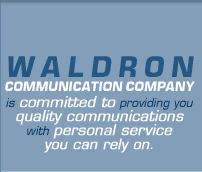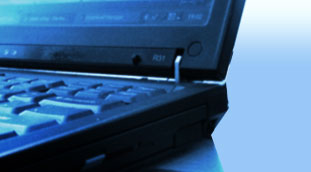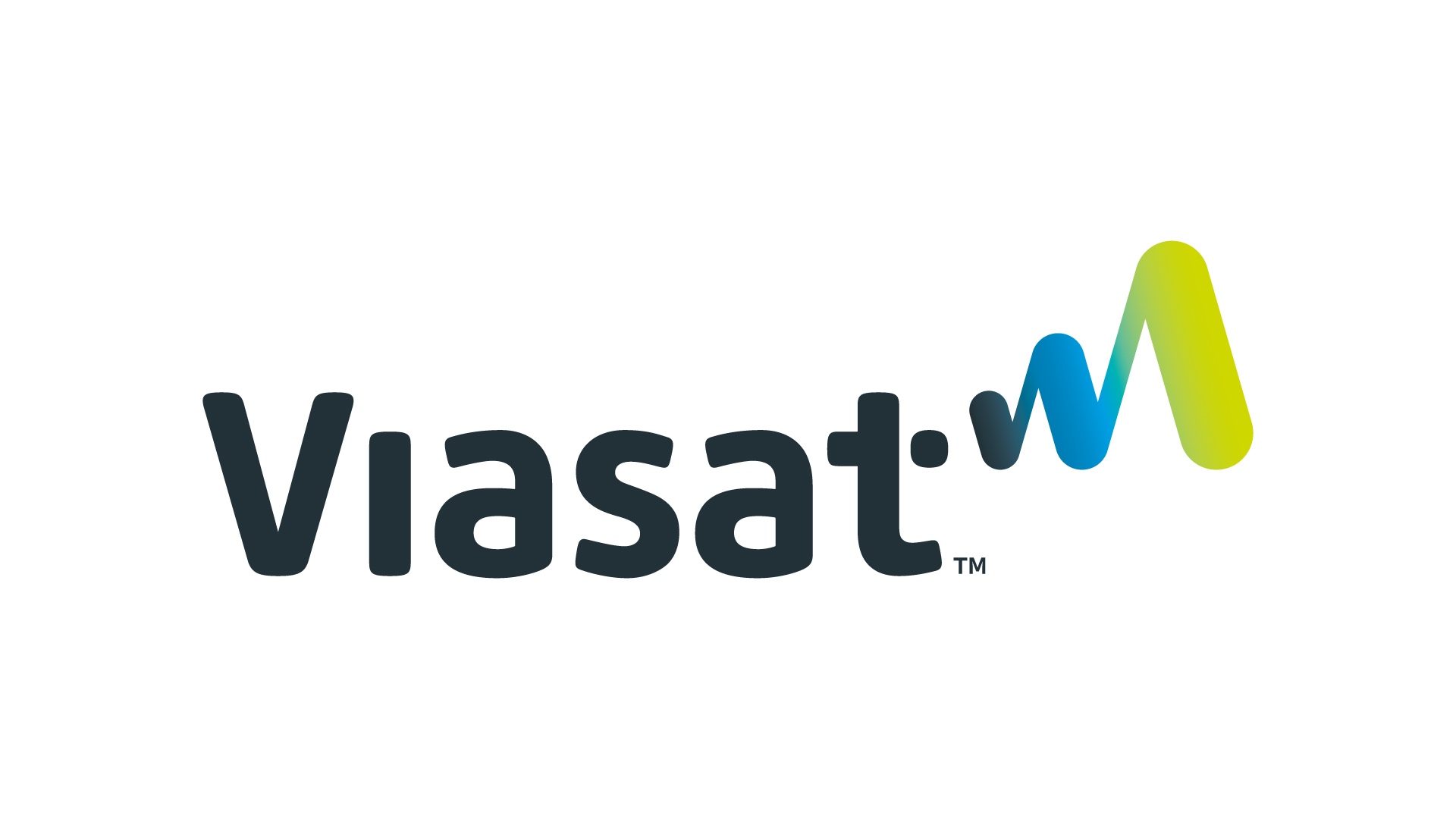|
Do you offer an Automatic Payment Plan?
Yes. Simply print and fill out the Automatic Payment Plan form, and then fax or mail to the address on the form.
What is the Internet?
The Internet is a vast network that connects many independent networks spanning over 170 countries in the World. It links computers of many different types, sizes, and operating systems, and, of course, the many people of those countries that use the Internet to communicate.
Who Owns the Internet?
No organization, corporation or government owns or runs the Internet. Instead, many people and organizations voluntarily participate in task force groups who meet to develop standards for the many various technical needs of running the Internet.
What can I do on the Internet?
The Internet Protocol makes it possible for you to communicate in various ways, find things that interest you, and exchange information and files. The most common things you can do are:
- Send and receive mail with people all over the world. Almost as fast as the telephone, there is never a busy signal, and you never play phone tag.
- Join in discussion groups about a common subject with Usenet Newsgroups and email discussion lists.
- Get or exchange software and files with File Transfer Protocol (FTP).
- Connect to thousands of different computers using Gopher menu systems, which make navigation from one site to another easy.
- Explore the World Wide Web ( WWW), which can use all of the above.
What are Internet Addresses?
There are two types of Internet addresses—domain addresses made up of words separated by dots (for example, world.std.com), and IP addresses made up of four numbers separated by dots (for example, 199.0.65.101).
Both types represent computer addresses on the Internet, and for many purposes, either type can be used. Numbered IP addresses represent specific computers on the Internet. Domain addresses may represent a specific computer or may be less specific.
How do I address mail?
To send mail, you must know the correct address and fill it in at the To: prompt. Simple Internet mail addresses consist of a Username, an @ symbol, and the address, which will consist of at least two words, separated by periods, For example, this is a correctly formatted address:
To: info@wcomco.net
There is never more than an @ symbol in an address. Occasionally, you will encounter an alternate form of address that uses exclamation points instead of an @ symbol or one in which there are several levels of addresses in which one or more % symbols act as secondary @ functions.
How do I find someone’s e-mail address?
Most online services will not give out personal information like e-mail addresses. On the other hand, some people register them and make them widely available. Other e-mail addresses are collected from usage.
What are Usenet Newsgroups?
Usenet Newsgroups are discussion groups about a topic that is reflected in their titles, such as:
comp.sys.ibm.pc.games.adventure or sci.astro.hubble. Many of the newsgroups have worldwide distribution, and their followers post messages, properly called "articles", for all to read and respond to. The "Usernet" part of the title refers to their distribution via the unix-to-unix network. Strictly speaking, newsgroups are a Usenet, not an Internet protocol, but they are widely picked up by Internet providers.
Where can I find Waldron Communication Company's Newsgroups?
Our news feeds can be received from news.wcomco.net
What is a URL?
A URL is an Internet or Web address that usually begins with http:// and is the address or location of a web page. An Internet address (or URL), is comprised of four parts:
- A protocol name (a protocol is a set of rules and standards that enable computers to exchange information)
- The location of the site
- The name of the organization that maintains the site
- A suffix that identifies the kind of organization it is (such as .com for commercial organizations)
For example, the address http://www.yale.edu provides the following information:
http: This Web server uses Hypertext Transfer Protocol (HTTP)
www This site is on the World Wide Web ( WWW)
yale The Web server is at Yale University.
.edu This is an educational institution.
How do I search for information on the Internet?
To search the Internet on any topic one uses a search engine. A search engine is a starting point which provides a field for typing your search criteria. All search engines provide different results, if you don't find what you are looking for, or need more additional information, try using another search engine.
1. Select your favorite search engine
2. Type your search criteria into the specified field. A simple search example is: airline tickets
3. Click on "Go" or "Search" on your screen, or press "Enter" on your keyboard.
How you tell a search engine to search a topic is important. To learn more about how to use a search engine, click the following link. http://www.albany.edu/library/internet/search.html
How do I create my own web page?
Your Waldron Communication Co. dial-up & DSL account comes with 10 megs of free web space. Follow these instructions on using your free space:
This information can be applied to any FTP program of your choice.
Connection, profile, or session name: depending on your program it may be called one of these or something similar. Basically what you need to put in that spot is a name that you will associate with your wcomco.net homepage.
Server Name: userpages.wcomco.net
Username: username that you used to logon to wcomco.net
Password: password that you used to logon to wcomco.net
Your username and password are case sensitive.
Remote directory: public_html, if you don't put this in you may have to double click on the public_html directory once you are logged in.
All of your webpage files need to be uploaded into the public_html directory. The main document of your webpage must be named index.htm or index.html
Port Number: 21, if your program asks for it.
Number of Retires: 99, but you will probally get in on the first try.
What is the World Wide Web?
The World Wide Web is one of the protocols that lets you link to many sites on the Internet. The basic unit is the page, such as the page you are now reading. A page can be one or many screens as it displays on your monitor.
Within the page are links to related pages and other web sites. This system of embedding links in the text on a page is called hypertext. The links are distinctive, and vary depending on your browser. With most graphical browsers, links are underlined and appear in a contrasting color.
Tim Berners-Lee and others invented the Web at the European Laboratory for Particle Physics ( CERN) in Switzerland. It was originally for text links only, but as it was further developed, multimedia links were added, too. Now, you can see pictures, listen to audio links, and see video links, if your computer and software are set up for them. With the addition of sound and graphics and fast modems to carry the large sound and graphics files, the Web soon became the most popular way of linking to resources on the Internet, replacing gopher, which was invented at the University of Minnesota.
What is HTML?
HTML stands for Hypertext Markup Language. It is a set of standard codes used to control layout, fonts, colors, and provide links to other pages. You can also add artwork, pictures, audio, and video to the page with the appropriate added files and HTML codes.
What is FTP?
FTP stands for File Transfer Protocol. A protocol is a language that enables computers to speak to one another. FTP is used to make files and folders publicly available for transfer over the Internet.
What is a firewall?
Firewall refers to the concept of a security interface or gateway between a closed network and the outside Internet that blocks or manages communications in and out of the network. The security may be provided by passwords, authentication techniques, software, and hardware may provide the security.
What is flaming?
Writing angry or insulting words about a person. It is most often applied to newsgroups, but it can apply to mailing lists and other forms of public messaging.
What information do you give away while websurfing?
When you visit a web site, some information is automatically available. Click on this link to the Center for Democracy and Technology to see the information that is available to all sites you visit. Be patient; it may take a minute to load your information.
If you clicked on the link above, you saw that any site you visit could tell—
- Who your provider is
- Where it is located
- What site you came from
- What software you are using
It can also record information about what you do while you are there, and perhaps collect further information from you. Many sites want you to register in order to use their services. You may be asked your real name and e-mail address, your home or business, your telephone number, you income level, your interests, and so on. This can be valuable information for running a business. The information in voluntary, of course, and they have no way to tell if you are faking the information. Think twice before giving out such information freely. Think about whom you are giving it to and what uses they could put the information to. How does your name get on spam mailings? This is one way!
What are cookies, and should you disable them?
If you clicked on the NY Times link, and it was your first visit there, you were asked to register and provide some information. If it was not your first visit and you had already registered, you were probably not asked to register again. How could they tell that you were a repeat visitor? The answer is that they planted a cookie on your system with information about you. When you connected, your cookie files were checked to see if you were a registered user, and you had elected to store your username and password in the cookie. This is an example of a persistent cookie, which remains on your system for a long time. Only the service that installed the cookie has access to it (beside yourself). It is either in a cookies.txt file on your browser’s disk drive or in a separate file of its own. Cookies may or may not be encrypted.
Is e-mail secure?
Whenever you send e-mail, it is relayed through successive sites, and is theoretically accessible to a couple of dozen or so postmasters and system administrators, who have access to everything that passes through their machines. As a practical matter, so many thousands of messages pass through their machines that the chances of anyone looking at any particular message are pretty small.
If you are using an e-mail account on your employer’s system, the courts have said that employers have a right to monitor e-mail on their systems. You’re probably run a somewhat higher risk of e-mail being read than you would with a large commercial provider.
On the other hand, suppose you have attracted the attention of an employer or law enforcement authorities for some reason. It is relatively easy to set up "sniffer" software to monitor every word of every message looking for your name or for certain keywords or combinations of words and to forward all such messages for special attention. If the organization’s security isn’t good and tight (many places aren’t), it is also possible for hackers outside the system to set up "sniffer" software in an e-mail system, too.
What this all adds up to is that unless you have reason to be a particular target, your chances of having mail intercepted and read is very small, but still exists.
Are credit cards safe to use on the net?
From the preceding discussion of e-mail vulnerability, you might not want to send credit card numbers through e-mail. What about using credit cards with web sties? There was a news story last year about a hacker who retrieved a credit card number list from a web site’s computer and sent the card numbers to the owners of the cards to show them how insecure the net is.
But you take similar risks every time you give your credit card to a stranger in a store or restaurant or over the phone. You take a risk every time you throw your credit card slips out in the trash. You risk giving away your credit card number every time you use it; the risks of using credit cards on the nets are probably less than every day usage, and the banks generally cover any losses anyway.
The public has been slow to trust credit card use online, and that is one major thing that is holding up large-scale electronic commerce.
Many sites provide servers that operate in a secure mode with your browser to let you send information in safe encrypted form though the web now. The major credit card companies have recently agreed on standards for secure transmission of credit cards. Security is going to get a lot better in the times to come.
Parental Control Software
The use of software to block pornography and undesirable material from children is a controversial subject. There is plenty of material on the Internet that presents nudity and sexual activity, both in text and pictures, although the media has tended to overstress its presence. Some of this material is clearly obscene by United States legal definitions, such as pedophilia. Some of it is clearly protected by the law, although perhaps unsuitable for children to view. Since the Internet knows no national boundaries, material that is illegal in the US can be retrieved from other countries where it may be legal. There is little that US legislation can do to prevent the accessibility of such materials.
The issue of censorship is a highly controversial one. Under the US Constitution and court interpretations, freedom of speech protects a lot of material that some find objectionable, particularly for children. The courts have ruled repeatedly that the goal of protecting children cannot be used to enact means that will also block materials from adults. Since it is difficult to impossible to block obscene materials from appearing on the Internet, and since it is impossible to get agreement on what should be blocked, action is left to individuals and families to find their own solutions. Schools and libraries with Internet access also have to deal with these issues in legal ways.
There are a number of approaches using software that can be used by parents and schools and libraries to restrict undesirable materials. Some are based on maintaining a list of sites that should be blocked on the basis of their content. Since such sites come and go very rapidly, this approach requires frequent updates to the software to be effective. Other software uses an on-the-spot evaluation of site content by analyzing vocabulary to determine what should be blocked. Some software uses a combination of these techniques.
The criteria used to block sites vary widely from one software package to another. Some packages are very restrictive, and have fallen under criticism for blocking too much. Others are designed to give the parent or administrator maximum control of what is blocked. Do you want to block sexual material only, or do you want to block out sites dealing with drugs, violence, and hatred, too? Do you want to restrict language usage in both directions? Do you want to control newsgroups, FTP sites, chat rooms, and message bases? Do you want a record of what sites your children visit?
The table that follows lists the major software packages available for access control, the platforms they run on, and links to their web sites. If you feel a need for such software, examine each of them, and select what best meets your needs. Reviews of most of these packages can be found at ZDNet.
|











